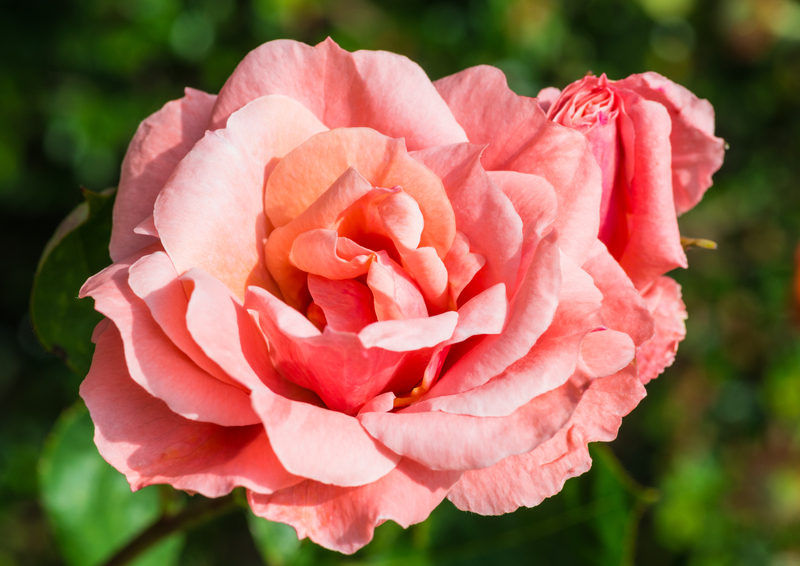Designing Your Own Succulent Bed
Posted on 27/12/2024
Succulents have earned a special place in gardening thanks to their striking appearance and low-maintenance growing requirements. Whether you are a seasoned gardener or a beginner, designing your own succulent bed can provide both aesthetic beauty and the satisfaction of creating a unique natural space. This guide will walk you through the critical steps to successfully plan and create your succulent bed, from site selection to planting and maintaining your succulents.
Selecting the Perfect Location
The first step in creating a stunning succulent bed is to pick the right location. Succulents thrive in areas with plenty of natural light. Choose a spot that receives at least six hours of direct sunlight each day. Additionally, ensure the location has well-drained soil, as waterlogged environments can lead to root rot in succulents. If your chosen site does not have excellent drainage, consider making raised beds or amending the soil with sand and gravel.

Preparing the Soil
Soil preparation is crucial to the health of your succulent bed. Use a well-draining soil mix specifically formulated for succulents and cacti. You can purchase commercial succulent soil or create your own by mixing regular potting soil with perlite, pumice, or coarse sand. This soil mix will ensure that excess water can escape easily, providing the ideal growing environment for succulents.
Designing Your Layout
The layout of your succulent bed should take into consideration both aesthetics and plant growth requirements. Group succulents with similar light and watering needs together to ensure they all thrive. Think about the heights, colors, and textures of different succulents when planning your design. Tall and spiky varieties can create a striking backdrop, while rosette-shaped succulents and ground covers form an eye-catching foreground. Use contrasting shapes and hues to add visual interest to your bed.
Planting Your Succulents
After selecting your succulents and designing your layout, it's time to start planting. Dig individual holes for each succulent, spacious enough to accommodate the roots and place them gently in the prepared soil. Be sure to allow space between plants to accommodate future growth. Water each plant lightly after planting to help settle the soil and remove any air pockets around the roots.
Care and Maintenance
One of the main reasons succulents are so popular is their low maintenance needs. However, they do require some basic care to flourish. Water your succulent bed deeply but infrequently, allowing the soil to dry out completely between waterings. Most succulents need watering once every 1-2 weeks during the growing season and even less often during dormancy. Fertilize your succulent bed once or twice a year with a balanced, water-soluble fertilizer diluted to half strength.
Pros and Cons of Designing Your Own Succulent Bed
Pros:
- Low maintenance
- Water-efficient
- Diverse shapes, sizes, and colors
- Great for small spaces
- Enhances landscape aesthetics
Cons:
- Susceptible to overwatering
- Limited growth in low-light conditions
- Needs protection from extreme cold
- Pests and diseases can still be an issue
Tips for a Thriving Succulent Bed
Here are some expert tips to help your succulent bed thrive:
- Incorporate rocks and mulch to retain moisture and reduce weed growth.
- Choose drought-tolerant companion plants to complement your succulents.
- Rotate pots occasionally to ensure even light exposure if you are using containers within your bed.
- Prune dead or damaged parts regularly to encourage new growth.

Takeaways
Designing a succulent bed can be a rewarding and enjoyable gardening project. By selecting the right location, preparing the soil, thoughtfully arranging plants, and providing proper care, you can create a stunning and resilient garden space. Succulents' low maintenance and unique beauty make them ideal for any garden enthusiast looking to add a touch of nature to their outdoor or indoor spaces.
Conclusion
Creating a succulent bed not only enhances the beauty of your garden but also provides a low-maintenance solution for busy gardeners. By following the steps outlined in this guide, you can design a visually appealing and flourishing succulent bed that will be the envy of your neighborhood. Remember to consider the pros and cons and tips to ensure your succulent bed thrives for years to come. Happy gardening!






 Certified and experienced landscapers
Certified and experienced landscapers



 Get a Quote
Get a Quote